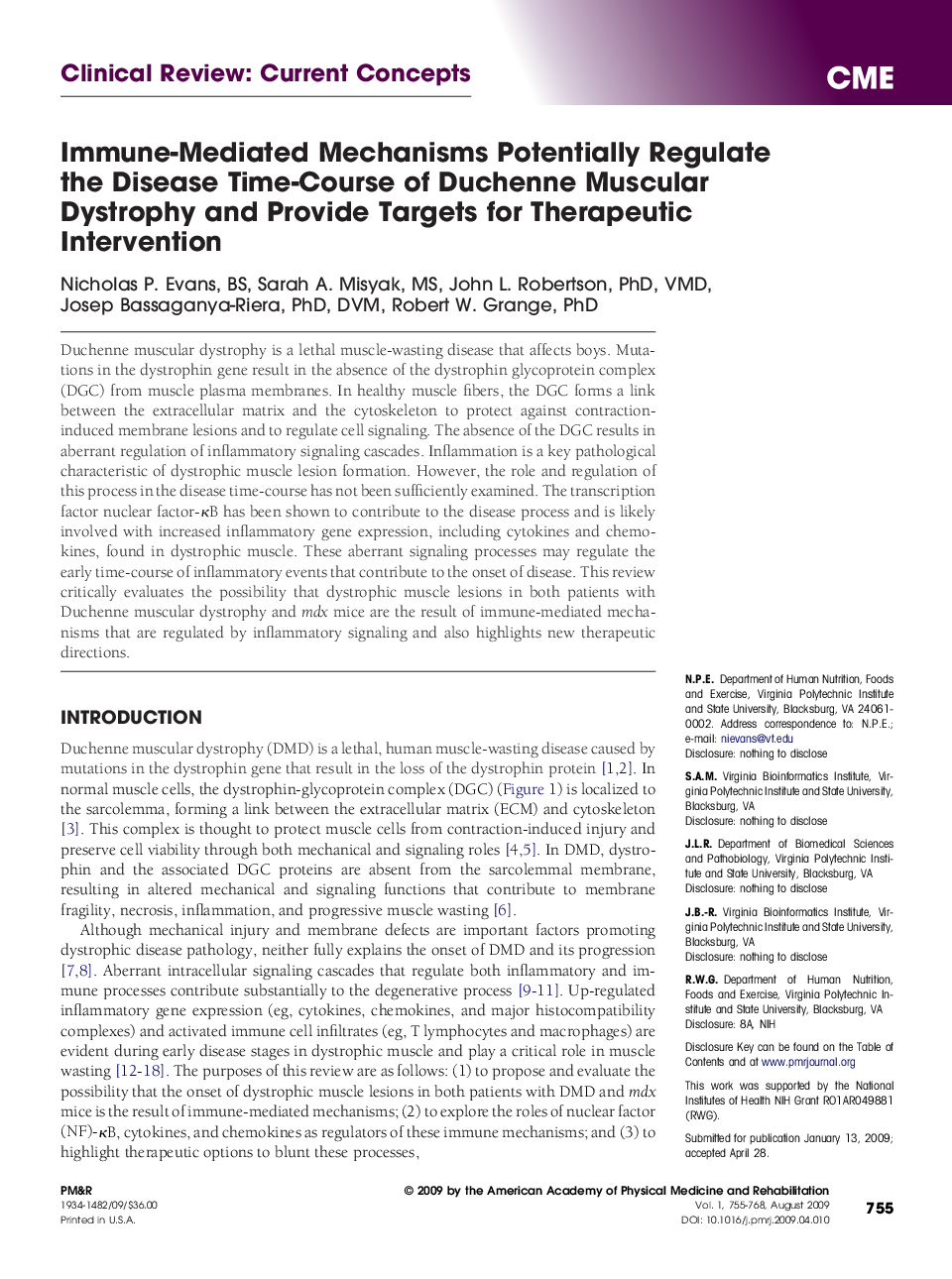| Article ID | Journal | Published Year | Pages | File Type |
|---|---|---|---|---|
| 2706685 | PM&R | 2009 | 14 Pages |
Duchenne muscular dystrophy is a lethal muscle-wasting disease that affects boys. Mutations in the dystrophin gene result in the absence of the dystrophin glycoprotein complex (DGC) from muscle plasma membranes. In healthy muscle fibers, the DGC forms a link between the extracellular matrix and the cytoskeleton to protect against contraction-induced membrane lesions and to regulate cell signaling. The absence of the DGC results in aberrant regulation of inflammatory signaling cascades. Inflammation is a key pathological characteristic of dystrophic muscle lesion formation. However, the role and regulation of this process in the disease time-course has not been sufficiently examined. The transcription factor nuclear factor-κB has been shown to contribute to the disease process and is likely involved with increased inflammatory gene expression, including cytokines and chemokines, found in dystrophic muscle. These aberrant signaling processes may regulate the early time-course of inflammatory events that contribute to the onset of disease. This review critically evaluates the possibility that dystrophic muscle lesions in both patients with Duchenne muscular dystrophy and mdx mice are the result of immune-mediated mechanisms that are regulated by inflammatory signaling and also highlights new therapeutic directions.
